Every living organism aims to grow and make more of itself. This is every species’ evolutionary drive and primary instinct.
Also, bacteria want to grow and flourish and reproduce. But they are only single cells so that their way of reproduction is unique. They reproduce asexually meaning you only need one parent bacterium to make two daughter bacteria.
When you think about it, bacterial cell division seems very easy: Start with one bacterium, divide it in the middle and you end up with two.
However, the mechanism of cell division is pretty complex and involves at least three tasks:
- the bacterium needs to decide WHERE to divide
- get all the needed machinery to the division site
- produce new cell envelope material to separate the two new daughter cells
How a bacterium starts cell division
As you can imagine, for most bacteria it makes the most sense to divide straight in the middle. Like this, they end up with two daughter cells of the same size.
This means a bacterium needs to find its middle and mark it. While it is not completely clear yet to researchers how bacteria find the exact middle, they know it involves a so-called Z-protein.
This Z-protein can bind two things: itself and the inside of the bacterial cell envelope. But it only binds the cell envelope where it is straight and not bent. And this is only the case in the middle of the bacterial cell envelope.
Hence, the Z-proteins bind themselves in a long chain linked to the straight cell envelope. Eventually, they form a ring on the inside of a bacterial cell. And this so-called Z-ring stays in the middle of the bacterium.
Also, the Z-ring is only stable when bacteria have enough nutrients and do not encounter any stress situations. This reassures that bacteria only divide when they have all the needed supplies.
How bacteria divide and produce two daughter cells
Once this Z-ring is stable, it recruits helper machineries to this now defined division site.
The Z-ring is a sign of an upcoming cell division. Now, the bacterium knows it needs to activate machineries to produce more cell envelope material and become longer. And to increase their cell envelopes, bacteria use ferries, tunnels and bridges to transport lipids into the cell envelope.
Like this, the bacterium becomes longer and can start the actual cell division. At the same time, the Z-ring becomes tighter and the cell envelope gets its natural bend again.
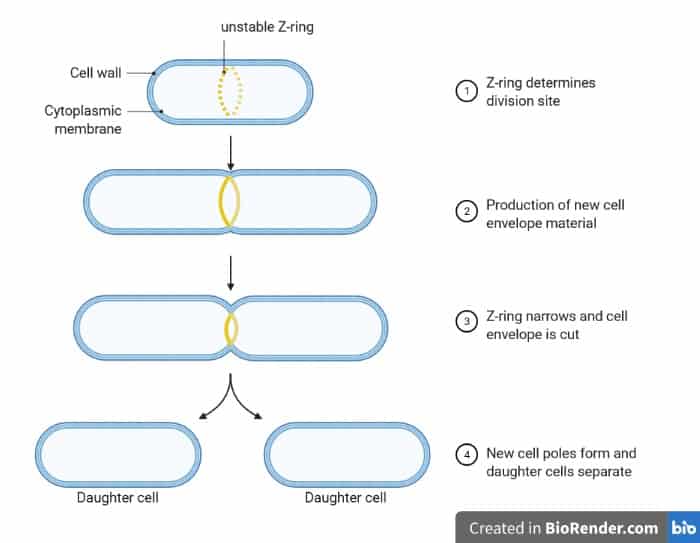
Now, two processes happen at the same time: Bacteria cut open their peptidoglycan envelope to separate the two daughter cells and also produce envelope material to close both cells.
After this happened, we have two daughter cells coming from the same parent. They both share the same cell envelope and genome. This is why we consider them identical twins.
But do all bacteria produce identical twins upon cell division?
Do bacteria always divide in the middle and produce identical daughter cells?
Yes, most bacteria are symmetrical. And when they divide right in the middle, they produce two identical daughter cells.
Researchers could even watch bacteria during this process thanks to amazing microscopy techniques. You can see the single stages of bacterial cell division and how bacteria produce the cell envelope in the image below.
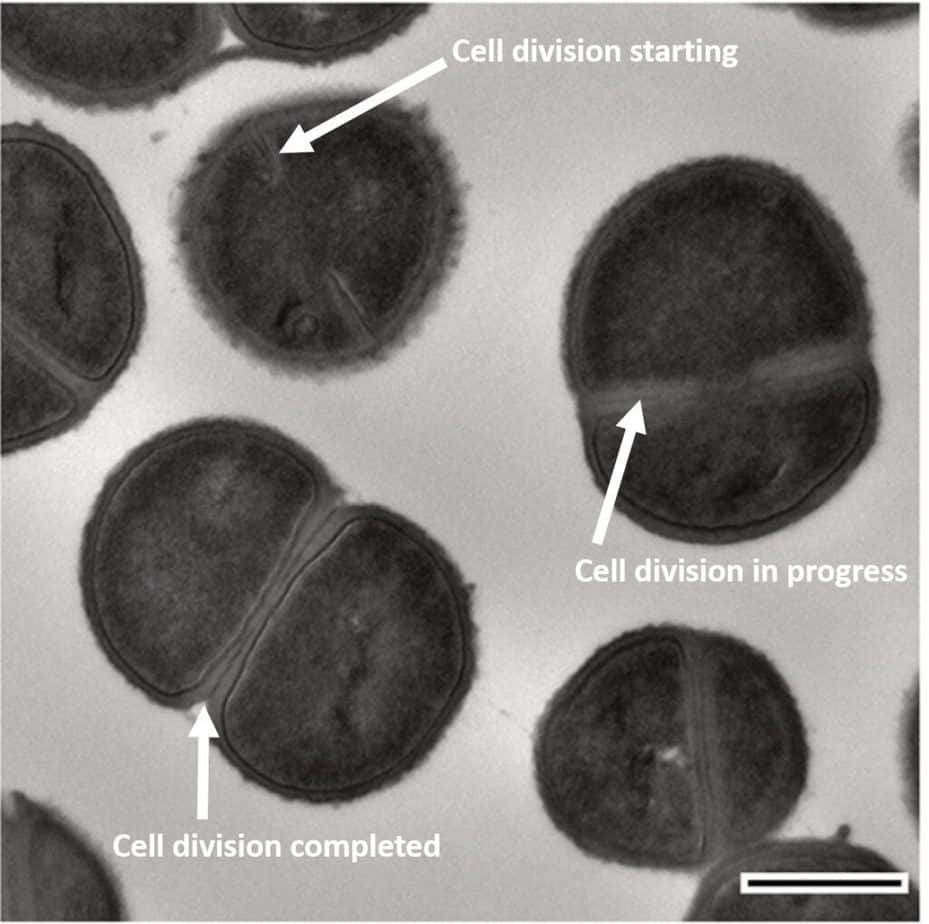
Yet, the bacterium Caulobacter crescentus has two different cell ends. It can stick to a surface with its sticky stalk on one end and have flagella on the other.
This bacterium also starts cell division in the middle like what we discussed above. However, the new daughter cells are now different: one is still glued to the surface and the other one has flagella and can swim away.

Also, the bacterium Helicobacter pylori with its helical shape can never really find its perfect middle. Hence, the Z-ring forms somewhere inside the bacterium and its daughter cells always have different sizes.
And then there are funny bacteria that decided they don’t even need to divide in the middle. Bacteria like Gemmatimonas aurantiaca grow “budding” daughter cells out of their own parent cells. However, researchers don’t understand yet why this bacterium chooses to divide in this asymmetric way.

Another way of asymmetric cell division happens in the bacterium Bacillus subtilis when it produces spores. During the sporulation process, the spore daughter cell grows within the mother cell. In the end, the mother cell bursts to release the spore into the environment. In this case, only one daughter cell comes out of the division process.
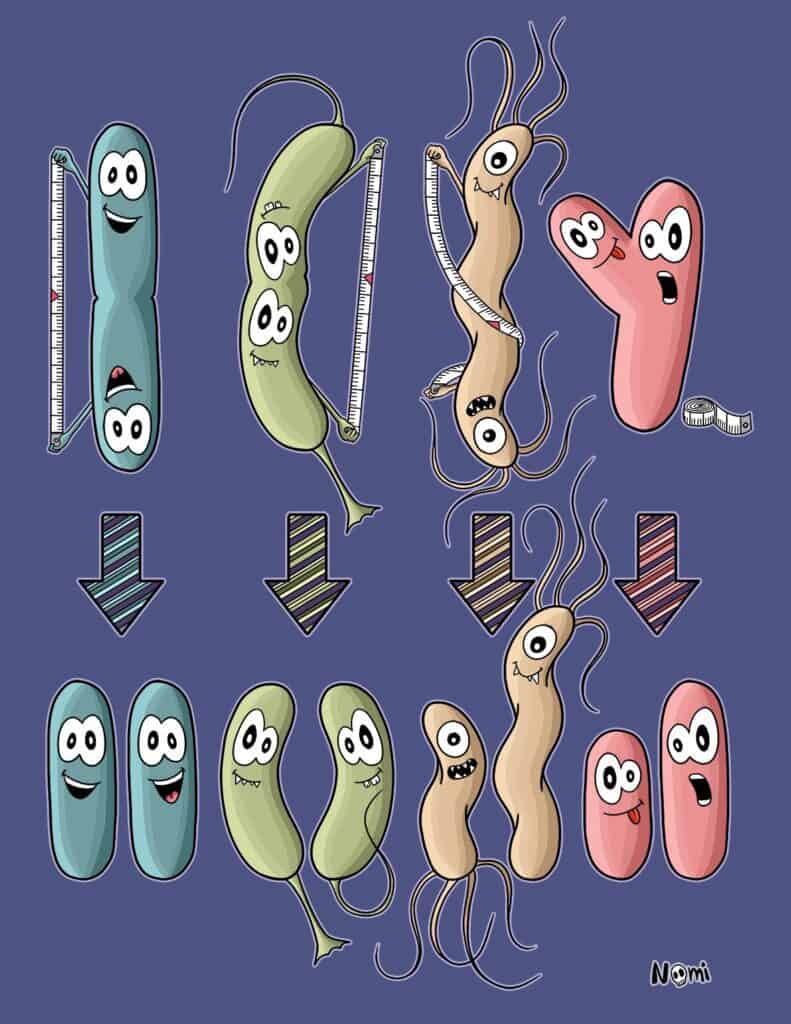
Why and how we want to prevent bacteria from dividing
Since cell division is an essential mechanism for bacteria, nature also found ways to inhibit it. Many antibiotics or toxins inhibit the production of cell envelope material or of the Z-ring. Like this, bacteria cannot divide anymore; they cannot grow and die.
However, we also know that some bacteria can find ways around the toxicities of antibiotics or toxins and become resistant to them. Hence, by better understanding how the whole mechanism works, researchers can hopefully find new ways to interfere with bacterial growth and find new weapons in the fight against antimicrobial resistance.



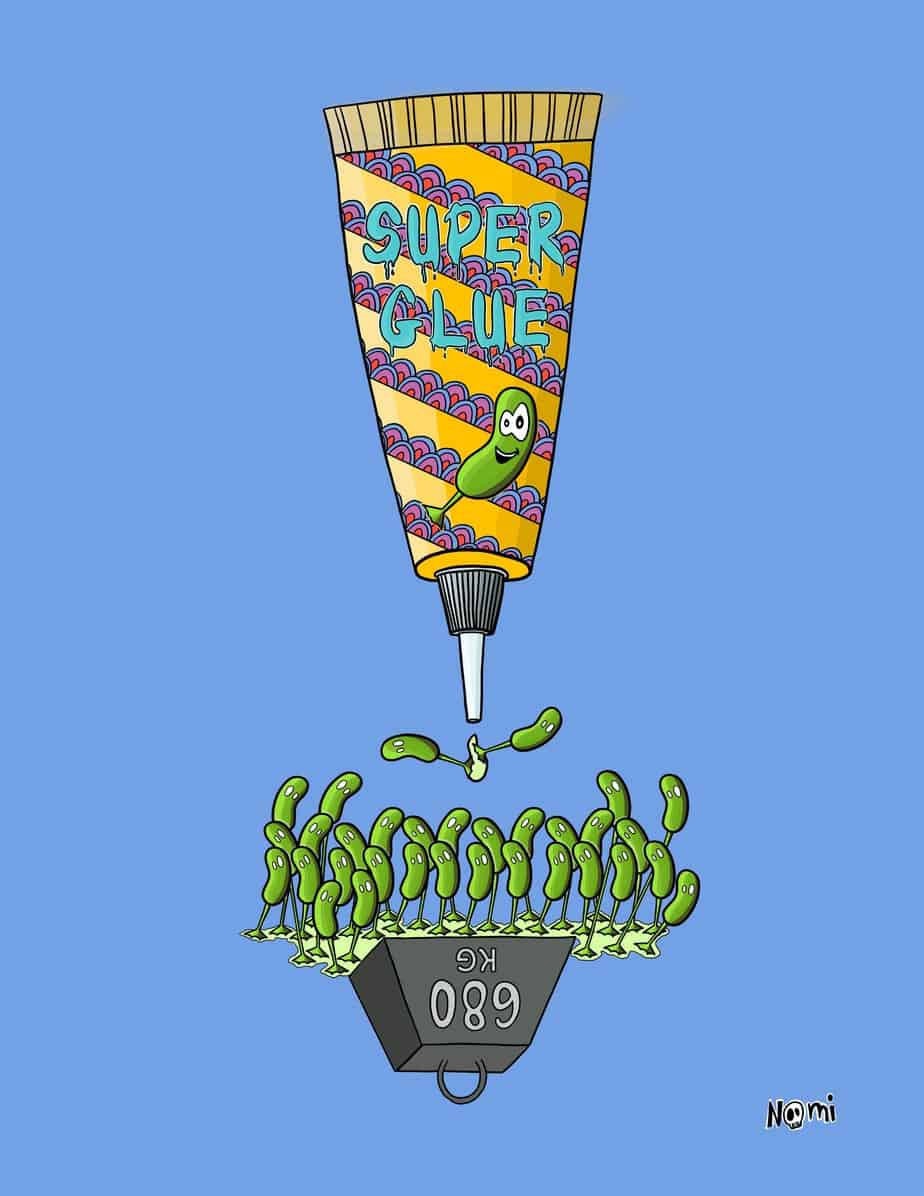

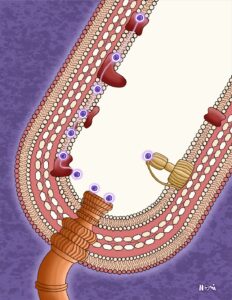
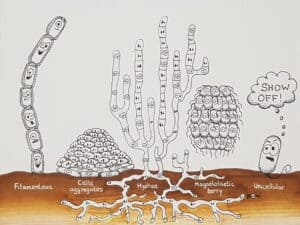

2 Responses
Excellent represenstion of the bacterial cell decision
Thanks a lot for your comment :) Glad you like it!